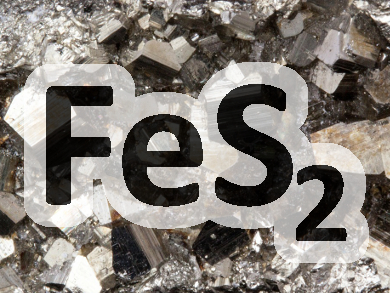Iron pyrite (FeS2, “fool’s gold”) is a cheap and abundant semiconductor material that could be promising for solar energy conversion on a large scale. In contrast to silicon, where the light collecting film must be relatively thick, iron pyrite can absorb sunlight using significantly thinner layers. However, its solar efficiency remains below 3 % despite efforts to improve the material, mainly caused by low photovoltage.
Song Jin and colleagues, University of Wisconsin-Madison, USA, have explained the poor performance of iron pyrite as a solar material. Using an array of analytical methods including optical, UV, and X-ray photoelectron spectroscopy as well as photoelectrochemical measurements, they characterized defects on the surface and in the bulk of iron pyrite single crystals. The researchers were able to explain the defects’ effects on the semiconducting properties and point to sulfur vacancies in the bulk as the reason for a low barrier height and the low photovoltage.
Understanding the reason for iron pyrite’s shortcomings as a solar material may allow the rational design of pyrite films for successful solar applications.
- Ionization of High-Density Deep Donor Defect States Explains the Low Photovoltage of Iron Pyrite Single Crystals,
Miguel Cabán-Acevedo, Nicholas S. Kaiser, Caroline R. English, Dong Liang, Blaise J. Thompson, Hong-En Chen, Kyle J. Czech, John C. Wright, Robert J. Hamers, Song Jin,
J. Am. Chem. Soc. 2014.
DOI: 10.1021/ja509142w




